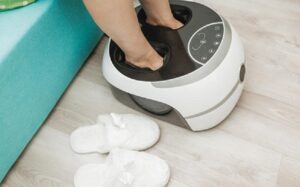A Quick Overview of Wisdom Teeth

The little molars are situated at the end of the jaw arch, and the wisdom tooth develops into a huge molar. They are the last teeth to erupt between the ages of 17 and 21. Additionally, wisdom teeth are known as molar. Each jaw contains two of these, totaling four in each jaw. The earliest human ancestors needed them to chew on local plants and food; today, they are not as beneficial, and we must remove wisdom teeth when they become problematic. Some even assert that since humans may not exist a few generations from now, wisdom teeth may not present a problem for us. This is more of an assumption.
When Is It Time to Remove Wisdom Teeth?
A professional dentist for refugees near Toronto states that the wisdom teeth are probably well-removed from the gums and perfectly aligned if the upper and lower jaws are fully matured and normal. In this instance, we wait until the wisdom teeth are healthy before removing them. The tooth must be extracted during caries and embeddedness or semi-embedding.
Wisdom Tooth Decay
Decay is the first issue that could arise with your wisdom teeth. Since wisdom teeth are more likely to deteriorate than normal teeth, dentists typically remove them without performing special restorations. But let’s say the tooth isn’t too badly decaying, and the patient objects to having it pulled. It could keep the wisdom tooth and prevent extraction using straightforward and occasionally specialized techniques.
Wisdom Teeth Can Erupt Fully or Partially.
One day, the wisdom teeth should emerge through the gums (if they are healthy and typical). Only some individuals, though, experience this. In actuality, for whatever reason, the tooth is hidden under the gum and skewed rather than being out for a set amount of time.
The term “embedded” refers to a tooth that is entirely below the gum line; the term “partially embedded” refers to a tooth that is partially exposed. Teeth that are embedded or partially implanted are abnormal. However, the implanted or partially implanted wisdom tooth is extracted when the patient experiences discomfort. However, the removal of the wisdom teeth will be given top priority if the tooth causes any of the issues listed below.
- Infection of the wisdom teeth
- Cysts developing on the wisdom teeth
- Making other teeth crowd in and cause crowding
- Damage to adjacent teeth
How Should I Get Ready for a Wisdom Tooth Extraction?
Eat well before wisdom tooth removal surgery because eating and drinking afterward will be challenging due to the 3-hour numbing of your jaw.
Maintaining good oral hygiene will lessen the likelihood of your surgical wound getting infected.
Having someone drive you home after wisdom tooth removal is advised because the process requires anesthesia, and you can feel confused. Having a ride home from someone else will be considerably safer.

What Should I Do Following Wisdom Tooth Extraction?
You could experience some mild bleeding after having wisdom teeth extracted, either surgically or non-surgically. This bleeding can be managed by stuffing the cavity with sterile gauze.
- Take the antibiotics and painkillers as directed on time.
- After a few hours, sterile gauze should be changed if necessary (if bleeding persists).
- Avoid food for many hours.
- Eat a moderately lukewarm, watery meal after a few hours.
- Do not spit out or rinse your mouth.
- Avoid brushing your teeth to avoid irritating the cavity.





